Asiegbu Miracle Kanu-Asiegbu
MambaST: A Plug-and-Play Cross-Spectral Spatial-Temporal Fuser for Efficient Pedestrian Detection
Aug 02, 2024Abstract:This paper proposes MambaST, a plug-and-play cross-spectral spatial-temporal fusion pipeline for efficient pedestrian detection. Several challenges exist for pedestrian detection in autonomous driving applications. First, it is difficult to perform accurate detection using RGB cameras under dark or low-light conditions. Cross-spectral systems must be developed to integrate complementary information from multiple sensor modalities, such as thermal and visible cameras, to improve the robustness of the detections. Second, pedestrian detection models are latency-sensitive. Efficient and easy-to-scale detection models with fewer parameters are highly desirable for real-time applications such as autonomous driving. Third, pedestrian video data provides spatial-temporal correlations of pedestrian movement. It is beneficial to incorporate temporal as well as spatial information to enhance pedestrian detection. This work leverages recent advances in the state space model (Mamba) and proposes a novel Multi-head Hierarchical Patching and Aggregation (MHHPA) structure to extract both fine-grained and coarse-grained information from both RGB and thermal imagery. Experimental results show that the proposed MHHPA is an effective and efficient alternative to a Transformer model for cross-spectral pedestrian detection. Our proposed model also achieves superior performance on small-scale pedestrian detection. The code is available at https://github.com/XiangboGaoBarry/MambaST}{https://github.com/XiangboGaoBarry/MambaST.
BiPOCO: Bi-Directional Trajectory Prediction with Pose Constraints for Pedestrian Anomaly Detection
Jul 05, 2022
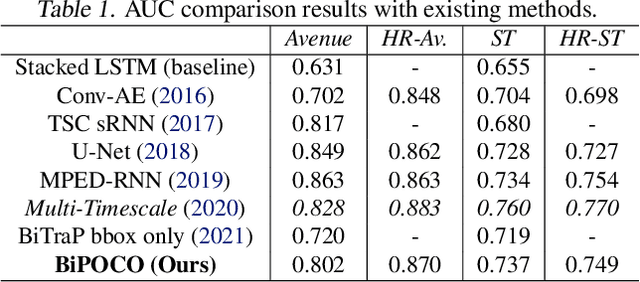
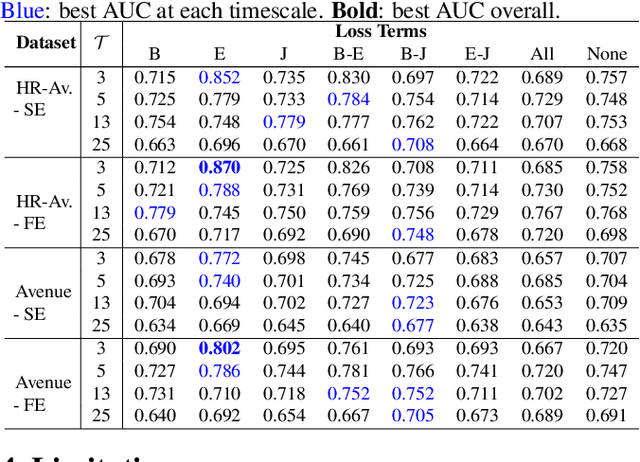
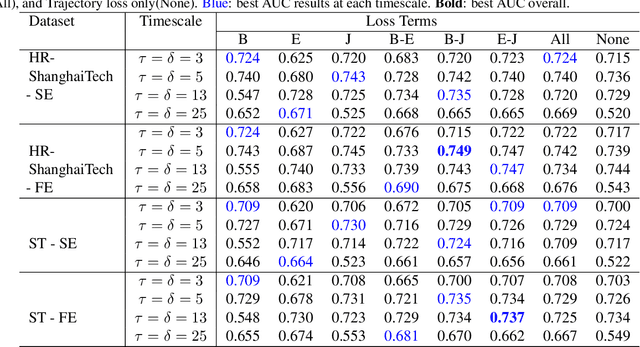
Abstract:We present BiPOCO, a Bi-directional trajectory predictor with POse COnstraints, for detecting anomalous activities of pedestrians in videos. In contrast to prior work based on feature reconstruction, our work identifies pedestrian anomalous events by forecasting their future trajectories and comparing the predictions with their expectations. We introduce a set of novel compositional pose-based losses with our predictor and leverage prediction errors of each body joint for pedestrian anomaly detection. Experimental results show that our BiPOCO approach can detect pedestrian anomalous activities with a high detection rate (up to 87.0%) and incorporating pose constraints helps distinguish normal and anomalous poses in prediction. This work extends current literature of using prediction-based methods for anomaly detection and can benefit safety-critical applications such as autonomous driving and surveillance. Code is available at https://github.com/akanuasiegbu/BiPOCO.
Leveraging Trajectory Prediction for Pedestrian Video Anomaly Detection
Jul 05, 2022
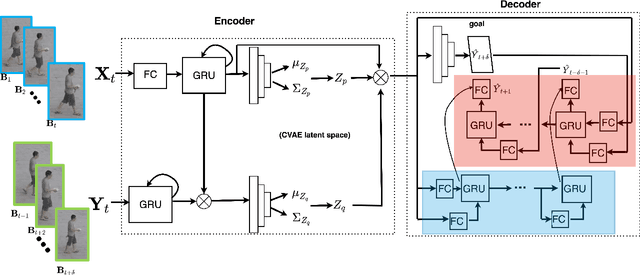

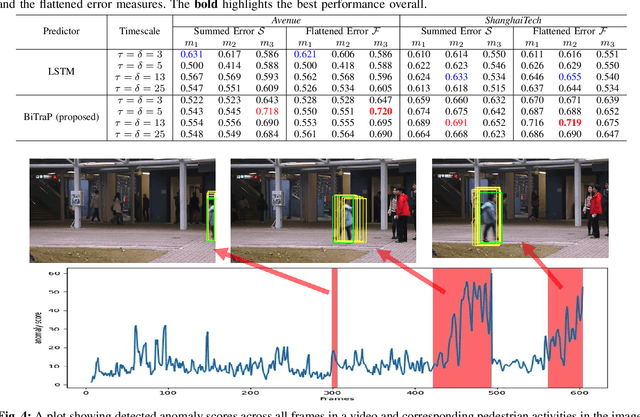
Abstract:Video anomaly detection is a core problem in vision. Correctly detecting and identifying anomalous behaviors in pedestrians from video data will enable safety-critical applications such as surveillance, activity monitoring, and human-robot interaction. In this paper, we propose to leverage trajectory localization and prediction for unsupervised pedestrian anomaly event detection. Different than previous reconstruction-based approaches, our proposed framework rely on the prediction errors of normal and abnormal pedestrian trajectories to detect anomalies spatially and temporally. We present experimental results on real-world benchmark datasets on varying timescales and show that our proposed trajectory-predictor-based anomaly detection pipeline is effective and efficient at identifying anomalous activities of pedestrians in videos. Code will be made available at https://github.com/akanuasiegbu/Leveraging-Trajectory-Prediction-for-Pedestrian-Video-Anomaly-Detection.
 Add to Chrome
Add to Chrome Add to Firefox
Add to Firefox Add to Edge
Add to Edge